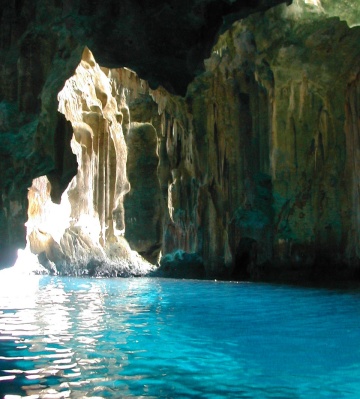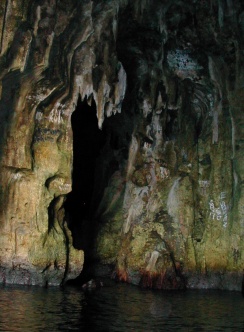KAPA ISLAND

Beautiful coastline of Kapa Island
We had a breakfast date with friends, and we wanted to pick up a few more provisions before heading away from Neiafu for a while, so it was late in the day before we got out of town.
Kapa Island, and specifically Fangakima, was on our list of places we wanted to visit, and it was nearby, so we chose to make this our first stop out of town. Kapa Island is only about 4 miles from where we had anchored in Neiafu, but it is a world apart. Fangakima is on the western shore of Kapa Island, and it is well protected in all conditions except NW (we had southeasterlies). Fangakima is usually called by its English name – Port Maurelle – named after the Spanish navigator who was the first European to visit Vava’u.
Because Fangakima is so close to town, it is a popular anchorage, and it is often crowded. There were twelve boats there when we arrived, but the cove is large enough that we did not feel crowded.
As soon as we were confident in our anchor set, we went off in the dinghy to explore. Our first stop was Swallows Cave on the NW tip of the island.
Swallows Cave is a multi-chamber cave accessible only from the water. However, the water just off the cave is 250 deep, so one must anchor elsewhere and go by dinghy. We were fortunate to be there in the late afternoon when the sinking sun lights up the multi-colored stalactites and the beautiful deep water and coral formations inside. There is also a dry cave accessible in one back corner, but we did not have shoes with us, so we could not explore.
Although parts of the overhead contain the mud nests of the birds that live there, parts of the overhead are covered only by brush. At the turn of the 20th century, this cave was used to entertain important visitors, and entire feasts were lowered down in to the cave through the openings that are now brush-covered.

Entry to Swallows Cave – looking outward

Dry cave inside Swallows Cave
Interestingly, the birds in Swallows Cave are starlings rather than swallows. However, apparently someone once thought that they were swallows, and they named the cave accordingly. The name has endured.
When we left Swallows Cave, we poked around the shoreline on both sides of the large bay. There were countless small caves and interesting lava formations. There is also a lot of coral at shallow depths. We have since learned that there are anemones with clown fish (Nemo) along the shore, and we will go back to try to get a few pictures.
But the sun was going down on our late afternoon, and we headed back to the boat. A few of the boats had left or were leaving, and we enjoyed a quiet night in this anchorage so close to town.
You can follow our travels in Vava’u to Lape, or you can return to our page on Vava’u.